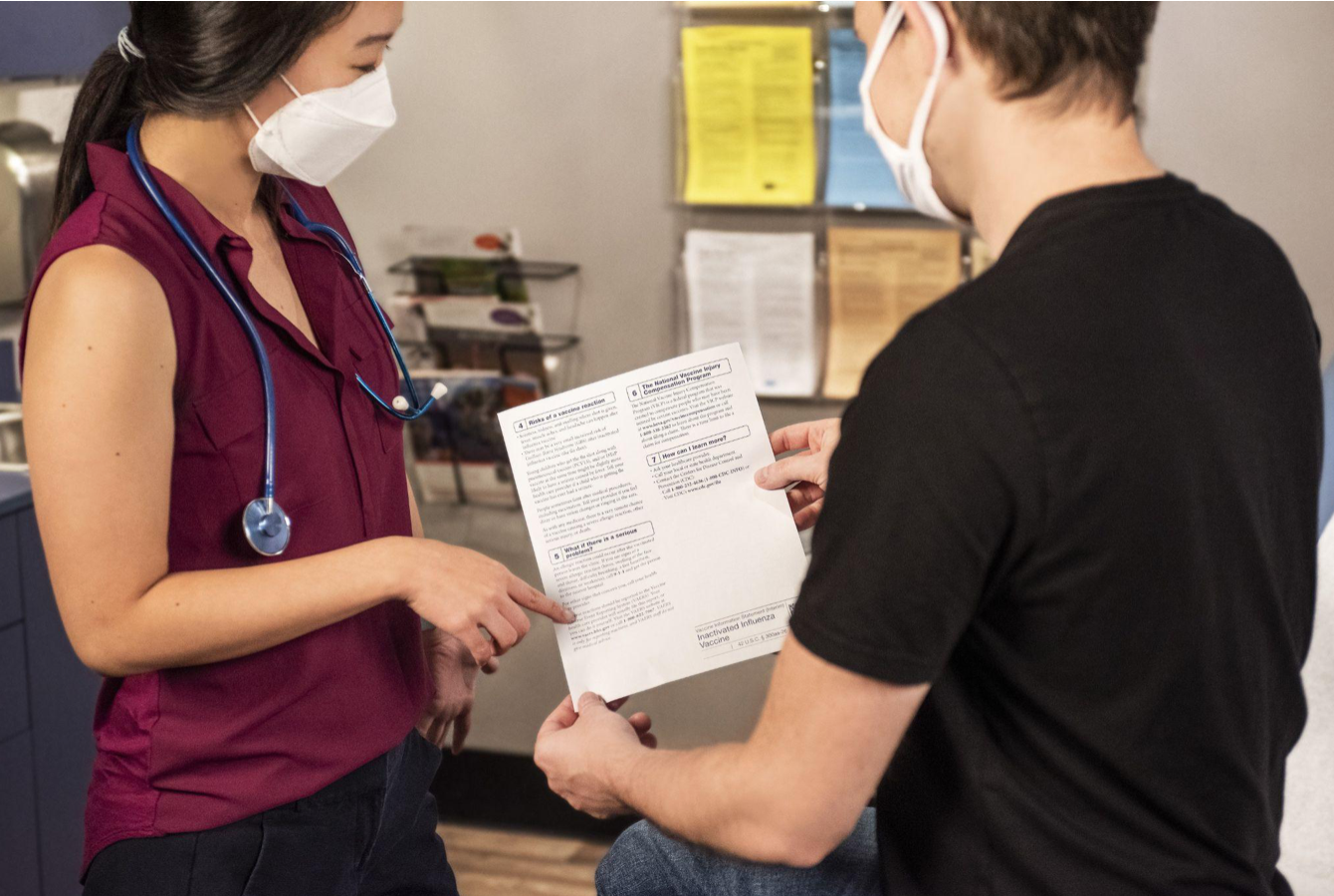With a healthy workforce, your business is better positioned to thrive and achieve its full potential.
Vaccinations are a cornerstone of public health, protecting individuals and communities from preventable diseases. In the workplace setting, vaccination programs offer a win-win situation. They safeguard employees’ health and well-being, while also reducing absenteeism and promoting a healthier, more productive environment.
If you’re considering implementing a workplace vaccination program, here are the essential steps to help you navigate the process effectively:
- Assess Your Employee Needs and Concerns
Before you consider mobile flu vaccination solutions, assessing employee needs and concerns is a vital step that directly influences the design and acceptance of your workplace vaccination program. This process involves more than just sending out a survey; it’s about engaging in meaningful dialogue to truly understand the diverse perspectives within your workforce. Here are some key elements to consider:
- Conduct anonymous surveys to gather honest feedback about vaccination hesitancy and support.
- Hold focus groups or town hall meetings to provide a platform for open discussion and address questions in real-time.
- Identify specific concerns related to vaccine safety, efficacy, and potential side effects, which can vary significantly among different groups within your workforce.
This detailed assessment not only informs you about the general sentiment towards vaccination but also highlights any misinformation or gaps in knowledge that your educational efforts need to address. It creates a foundation for a vaccination program that is not only informed by data but also shaped by the real-world concerns and needs of your employees.
- Develop a Clear Communication Strategy
Clear, consistent communication is the backbone of any successful vaccination program. Your strategy should outline how you’ll inform employees about the benefits of vaccination, the specifics of the program, how they can participate, and the legal and ethical implications of workplace vaccine mandates. This approach is vital for addressing any concerns head-on and maintaining transparency.
Effective communication channels might include company-wide emails, informational webinars, and Q&A sessions with healthcare professionals. The goal is to create an open, informative dialogue that encourages participation through education and reassurance, ensuring employees understand their rights and any obligations they may have under the program.
- Partner With Healthcare Providers
Collaborating with healthcare providers is a critical step in rolling out your vaccination program. This partnership can take various forms, from hosting on-site vaccination clinics to arranging for group appointments at local healthcare facilities. The aim is to make vaccination as accessible and convenient as possible for your employees, removing barriers to participation.
- Offer Incentives and Support
While not mandatory, offering incentives can encourage higher participation rates. Here are some creative ideas that go beyond simply offering paid time off:
- Provide on-site vaccination clinics during work hours to reduce the need for employees to take time off or travel, thereby minimizing workday disruptions.
- Offer rewards such as healthy meal vouchers or gym membership discounts, underscoring the company’s dedication to overall employee health.
- Have a company wellness fair featuring vaccination booths, health screenings, and healthy lifestyle information sessions to promote health in a community atmosphere.
- Do recognize employees who complete their vaccination series, whether through public acknowledgment in company communications or small tokens of appreciation like gift cards.
Remember, the goal is to motivate employees, not coerce them. By offering a variety of incentives that cater to different preferences, you can increase participation without compromising employee autonomy.
- Implement a Tracking and Follow-up System

Healthcare provider and patient going over paperwork; image by CDC, via Unsplash.com.
To gauge the effectiveness of your workplace vaccination efforts, you’ll need a robust system for tracking participation rates and follow-up actions. This system should respect employee privacy while enabling you to monitor progress towards your vaccination goals. Additionally, planning for booster shots or additional doses as recommended by health authorities is crucial for maintaining immunity over time.
- Evaluate and Adjust the Program
No program is perfect from the start. As you roll out vaccinations at work, consider ongoing evaluation, as it allows you to identify areas for improvement and make necessary adjustments. This could involve tweaking your communication strategy, offering additional incentives, or addressing logistical challenges that emerge. Regular feedback from employees can also provide invaluable insights for refining the program.
- Foster a Culture of Health and Wellness
A workplace vaccination program is most effective when it’s part of a broader culture of health and wellness. Encourage healthy lifestyles, provide resources for mental health support, and create a work environment that prioritizes employee well-being. This holistic approach reinforces the importance of vaccination as a component of overall health and encourages a more health-conscious workforce.
Conclusion
By implementing a well-structured workplace vaccination program, you’re investing in the health and well-being of your employees. This not only fosters a positive and productive work environment, but also translates to reduced healthcare costs and lower absenteeism rates. With a healthy workforce, your business is better positioned to thrive and achieve its full potential.


Join the conversation!